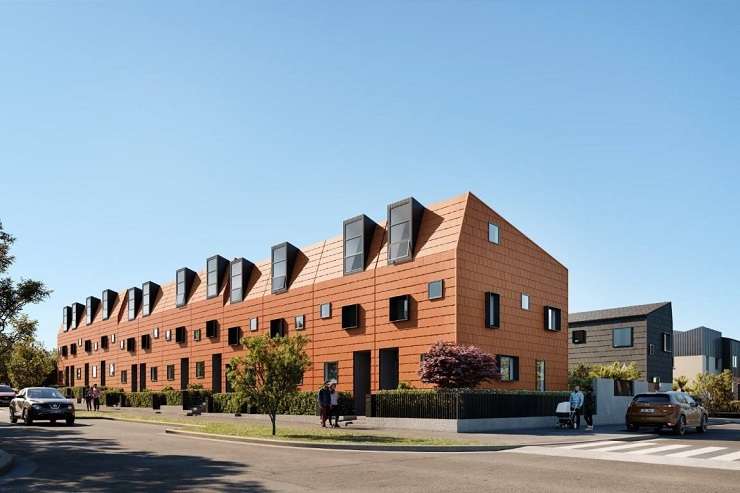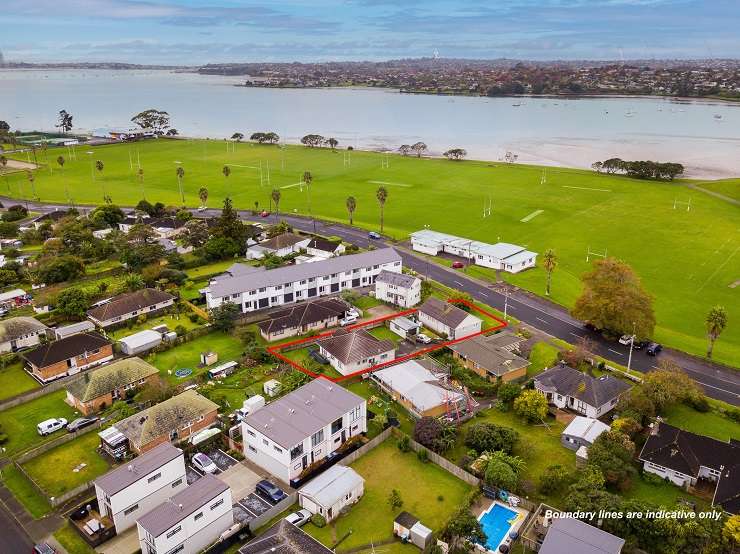While Auckland residents in blue chip suburbs start to worry about high rise apartment blocks popping up near their train station or town centre, they may be able to rest easy.
A directive from the Government to require more housing intensification across the city has seen Auckland Council release a proposed approach which will be the biggest change to planning rules since the Unitary Plan of 2016.
New apartment zones will stretch from a 15-minute walk at the edge of the central city and 10 minutes at the edge of 10 metropolitan centres, allowing buildings of six storeys or more to be built in many of the city's single-house and heritage suburbs.
Colliers national director of property development Peter Evans says that while more desirable zones within walking distance of transport hubs will get more developer attention, there is a commercial reality with the cost of building in New Zealand that may see only medium-rise apartments get built, not high-rise.
Start your property search

Costs and time delays on apartment builds over six storeys are likely to put developers off high-rise for a while. Photo / Supplied
“The reality is that once you go up to six storeys, that means cars going into a basement and the build cost is significant. In cities like Auckland, the strengthening, the columns, the steels and the time delays are huge. It can delay construction six months or more on an 18-month build.
“Developers tell us they can charge for a car park at $100,000, but they don’t make any margin on that at all, and it’s taken all that extra time to get out of the ground.”
Evans expects that the new rules will bring developers to the desirable locations, but points out that the most desirable locations – the old tram suburbs that most closely ring the city, even old train station towns like Papatoetoe or Otahuhu – are also those that will have character housing, or within volcanic view shafts that exclude them from high-rise developments.

Developers paid $2.81 million - $770,000 more than its 2017 council valuation - for land in Dunkirk Road, Panmure. Photo / Supplied
“Places like Albany you may go higher, gradually getting up to eight or 10 storeys, but you’ve not had to go and buy up land, the developable lots are sitting there. Same around Manukau or New Lynn, those regional shopping centres as opposed to those semi-infill sites closer in.”
It comes as developers pay over the odds for Auckland land zoned for apartment density, with a property at Mount Wellington selling for more than 150% above council valuation.
The 1017sqm site at Ryburn Road, Mount Wellington, last week sold under the hammer for $2.36m - $1.42m above its 2017 valuation.
Ray White agent Bob Lemalu, who marketed the property, told OneRoof that the 1950s three-bedroom property, which last sold 30 years ago for $166,000, backs onto another huge 40-unit development.
“The end market is there. Two- and three-bedroom homes are selling for $1m.”

Just two doors up the road, buyers snapped up seven townhouses priced between $1.03m and $1.215m. Photo / Supplied
Tom Rawson, co-owner of Ray White Manukau, says that the agency is seeing repeat developer buyers in the auction rooms, now chasing properties beyond their traditional south Auckland patch and into Mount Wellington and Glen Innes.
“People turn up and bid on one property. If they miss out, they bid on the next. They turn up to see what they can buy and just work out how much per square metre they’re paying.”
Rawson says that the council’s proposed increased densification will attract even more bidders for sites close to the train stations of Papakura, Manurewa, Otahuhu and Papatoetoe.
“We’ll have more people coming out of the woodwork, people aren’t scared to go down that path, up and not out.”
He adds that some of this densely-zoned land may change hands several times before someone actually builds on it.
“The land with the most density, that’s the best to landbank. As buildings go up around it, then it just becomes so much more valuable.”

A developer paid $2.36m for this Mount Wellington land zoned for Terraced Housing and Apartment. Photo / Supplied
Developers need only look at sales last month on a pair of neighbouring properties in Panmure, on the Tamaki Estuary, a 10-minute bike ride from Panmure train station.
In early June, a pair of three-bedroom 1950s houses on a 958sqm site at Dunkirk Road sold at auction for $2.81 million, $770,000 above the property’s 2017 council valuation.
Nine bidders, all developers, vied for the property, zoned for townhouses and apartments, says Professionals agent Simon Abbott, who marketed the property with colleague Josh Kumar, with seven offers made before the auction.
“The vendor had held this for decades. People got excited about $2m pre-auction offers, but we got closer to $3m at auction because we stuck to our guns.”
Abbott says that he and Kumar always market their properties with concept plans for what could be built on the site to help buyers.
“You spend $1000 and can get another $100,000 on the price.
“We’ve sold 30 or 40 development sites since Covid. We sold eight in the last 14 days. Developers will buy anywhere in Auckland if it’s THAB, they’ll have their own construction company, they know what they’re doing.”
Developers need only look two doors up the road, where Ray White agents Darrin Fordham and Daniel Young sold seven new townhouses on a 994sqm site in less than six weeks. The three-, two- and one-bedroom townhouses (the owner kept the eighth for himself) sold for between $1.03m and $1.215m.
OneRoof records show that land sold in early 2019 for $1,230,435.
Fordham says the competition was fierce – the townhouses were brought to auction, attracting a whole new set of buyers to the suburb.
“These were all people who were new to Panmure, all professional couples, doctors, builders, people in their late 20s upwards, first-home buyers. That’s not the demographic you would expect.”















































































